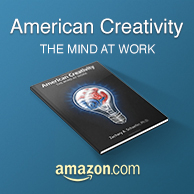The world as we know it wouldn’t exist without collaborative actions and healthy competition. Most of us prefer one of these two ways of thinking and acting over the other, but they are both necessary components of an effective organizational environment. Problems emerge when organizations don’t create and enforce effective mechanisms to foster collaboration and competition. Two things typically happen: organizations create incentive systems that lead to coworker distrust and schisms between management and workers. Second, organizations rarely take the time to create communication systems that foster collaboration or understand how to manage agreement. People often think they are in agreement with others when in fact they are not. Mismanaging agreement leads to wasted opportunities for innovation.
To put the troubled relationship between competition and collaboration into context, I’m currently studying how people use creativity in the workplace. One of the participants said, “I’m a writer, and I would never share my ideas with others until they’re finalized. I protect my intellectual property from idea conception to the final printing of the product.” As an academic, I see this person’s point, however, they are missing the fact that our ideas are always tied to others. We stand on the shoulders of giants even if we never look down to see where we’re standing. Writers do share their ideas with others…at the minimum with editors and trusted colleagues. To act as if books – or products and services for that matter – are created by isolated geniuses is to lie to ourselves. Inventing a new idea, product, or service usually involves creative borrowing more than it does individual epiphanies. We need to create more chances for group epiphanies that are the result of structured but challenging conversations.
Organizations need to assess their amount and type of collaboration and competition in the workplace. Each of these perspectives is expressed through communication, workplace norms and rituals, and language. The key is to create effective communication systems that lead to a collaborative competition that uses the strengths of each approach and minimizes the weaknesses. When workers guard information for fear that others will steal it, they miss opportunities to improve their thinking, clarify their arguments, and invent better products.
To assess and understand your organization’s use of workplace collaboration and competition, contact the Chief Executive Officer of MCS, LLC: zach@sparkthediscussion.com



